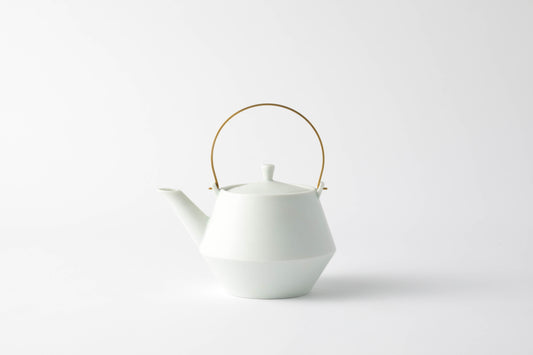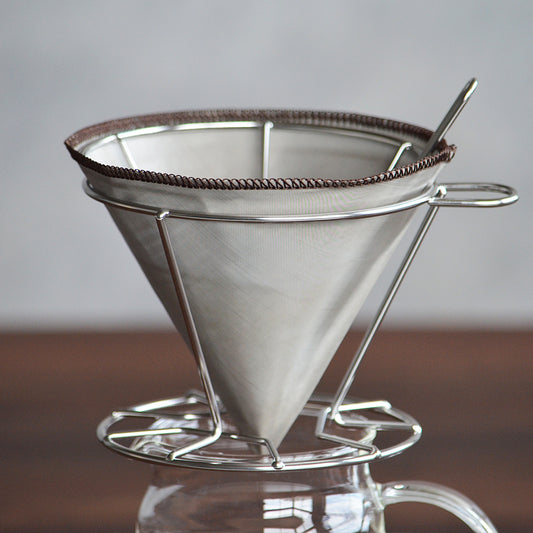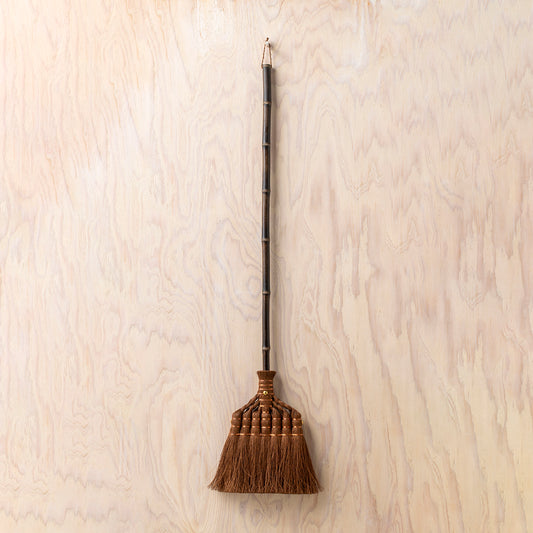鳴瀧窯
nagom BASIC (Hidaski)
nagom BASIC (Hidaski)
Supplementary product information
Supplementary product information
Production area: Okayama Prefecture
Size:
・(Height) 150mm
・(Diameter) 87mm
Material: Pottery
Capacity: Approximately 200mL
Electronic appliances: Dishwasher not recommended / Microwave △ (Light warming only)
【Before Use】
As this is made from natural clay, the surface has fine irregularities where oils and moisture can easily penetrate.
To prevent this as much as possible, we recommend soaking in water for about 30 minutes before first use if possible. Please note that cups and similar items will inevitably develop color staining from coffee and other beverages.
【After Use】
Dish detergent may be used, but please wash as soon as possible. After washing, we recommend allowing to air dry naturally before storing.
【About Color Staining】
Coffee, tea, and other strongly pigmented beverages will gradually cause staining on the vessel. For stubborn stains, please try oxygen bleach. Also, please do not use boiling water when using. Bizen-yaki is pottery that is sensitive to sudden temperature changes.
【nagom BASIC Set Contents】
・nagom main unit
・Nel filter
・Trial paper filter (limited quantity) 1 piece
・Coffee brewing instruction leaflet
・Narutaki kiln leaflet
・Bizen-yaki bookmark
・nagom exclusive BOX
Couldn't load pickup availability
A single-serve dripper set based on the concept of "nagomi" (harmony).
We want people to enjoy coffee more casually with Bizen pottery, even when alone or during work breaks. With this heartfelt intention, the Bizen pottery dripper "nagom" was born. The dripper, cup, and saucer all fit together in a cylindrical form, blending naturally into any interior setting just by placing it.
nagomBASIC (Hidasuki) features an overall beige-toned, bright coloring that brings out the natural essence of the clay itself. Through the distinctive Bizen pottery technique of "Hidasuki firing" (firing while wrapped with rice straw), the straw-wrapped portions create striking red accents.
※The firing results of Bizen pottery vary greatly depending on kiln temperature, conditions, and clay type, and these can also differ significantly based on placement within the kiln, ensuring that no two pieces have identical firing patterns. The images show examples of firing results, so please understand that the color and patterns will not be exactly the same.
Additionally, the color of the vessel may change with use. Please appreciate this as part of the unique character of Bizen pottery.
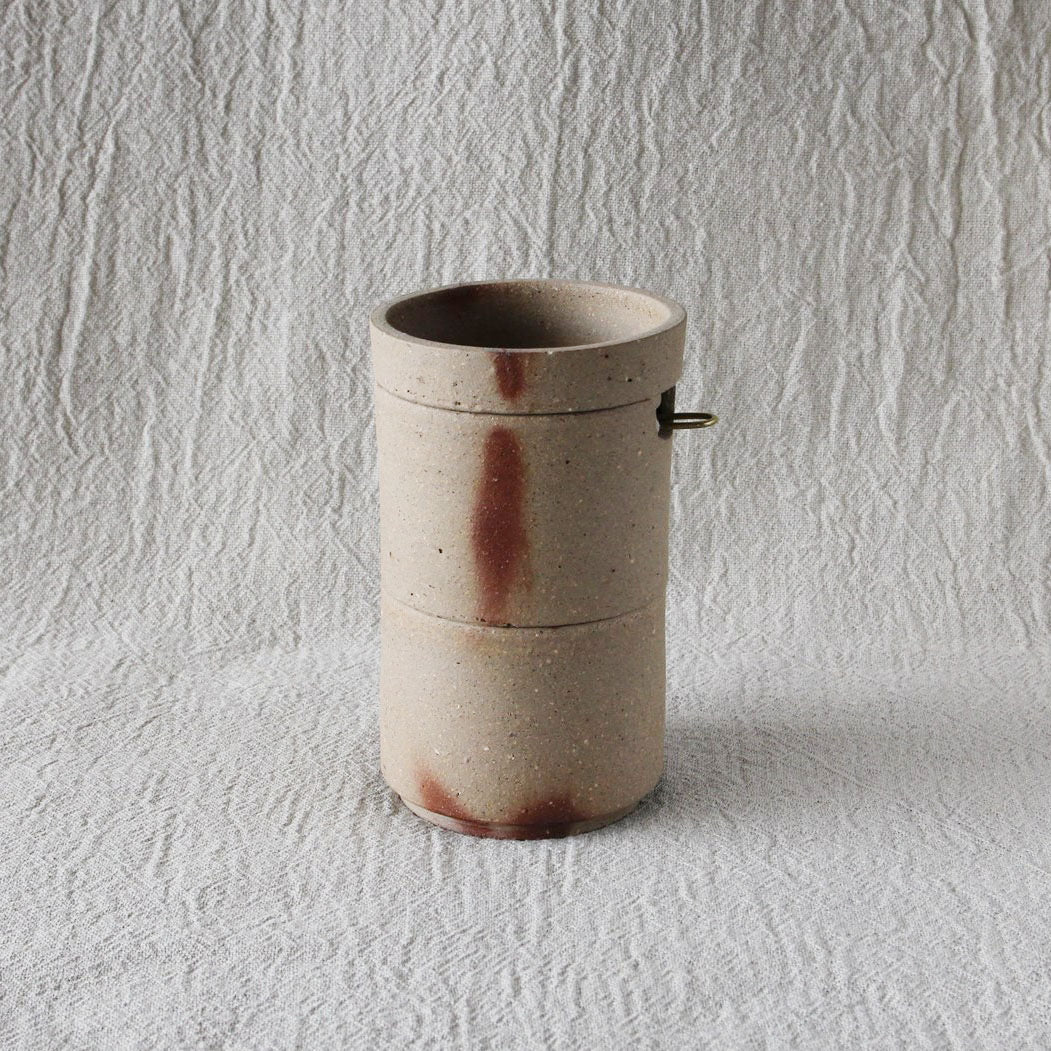
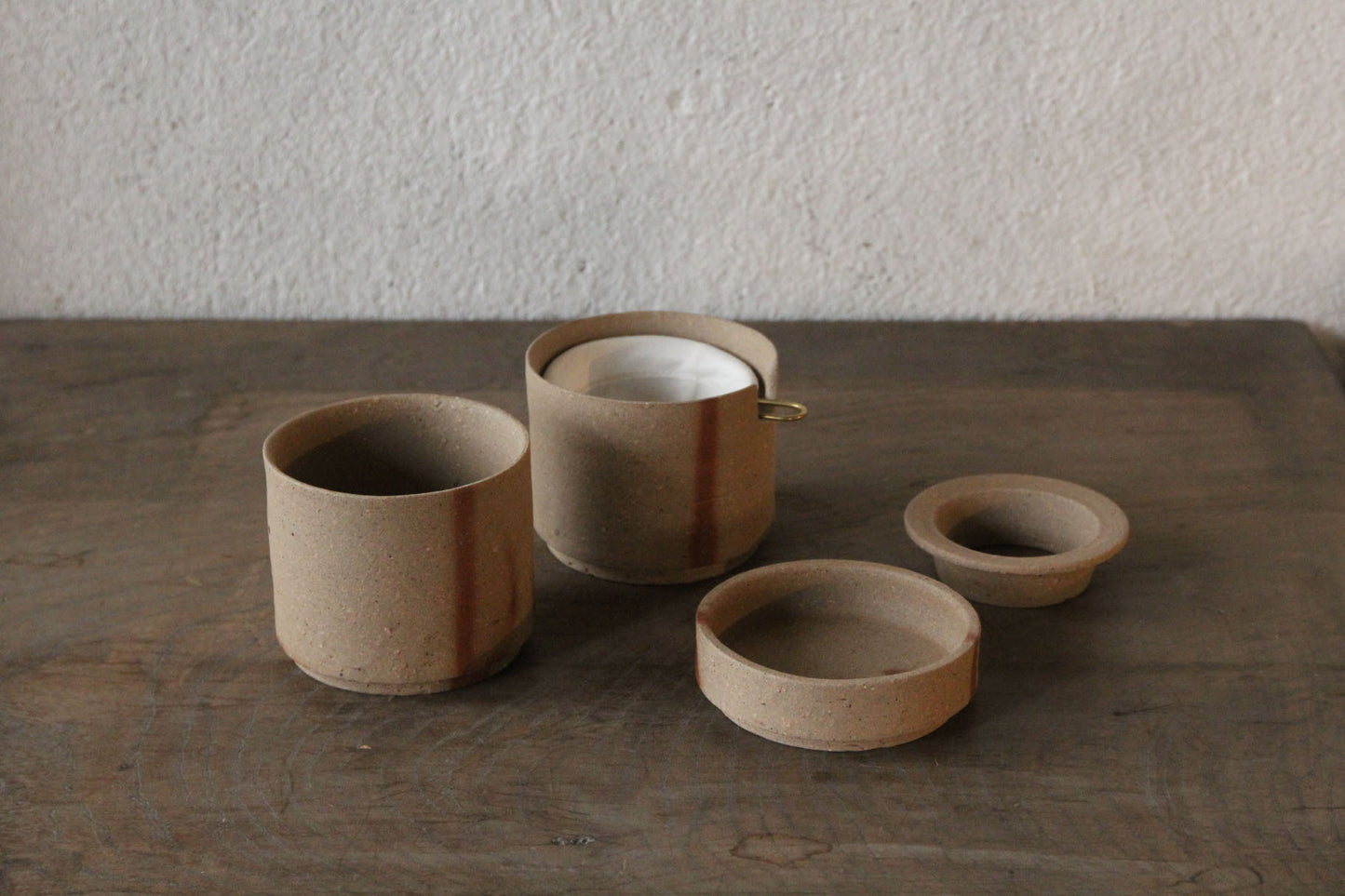
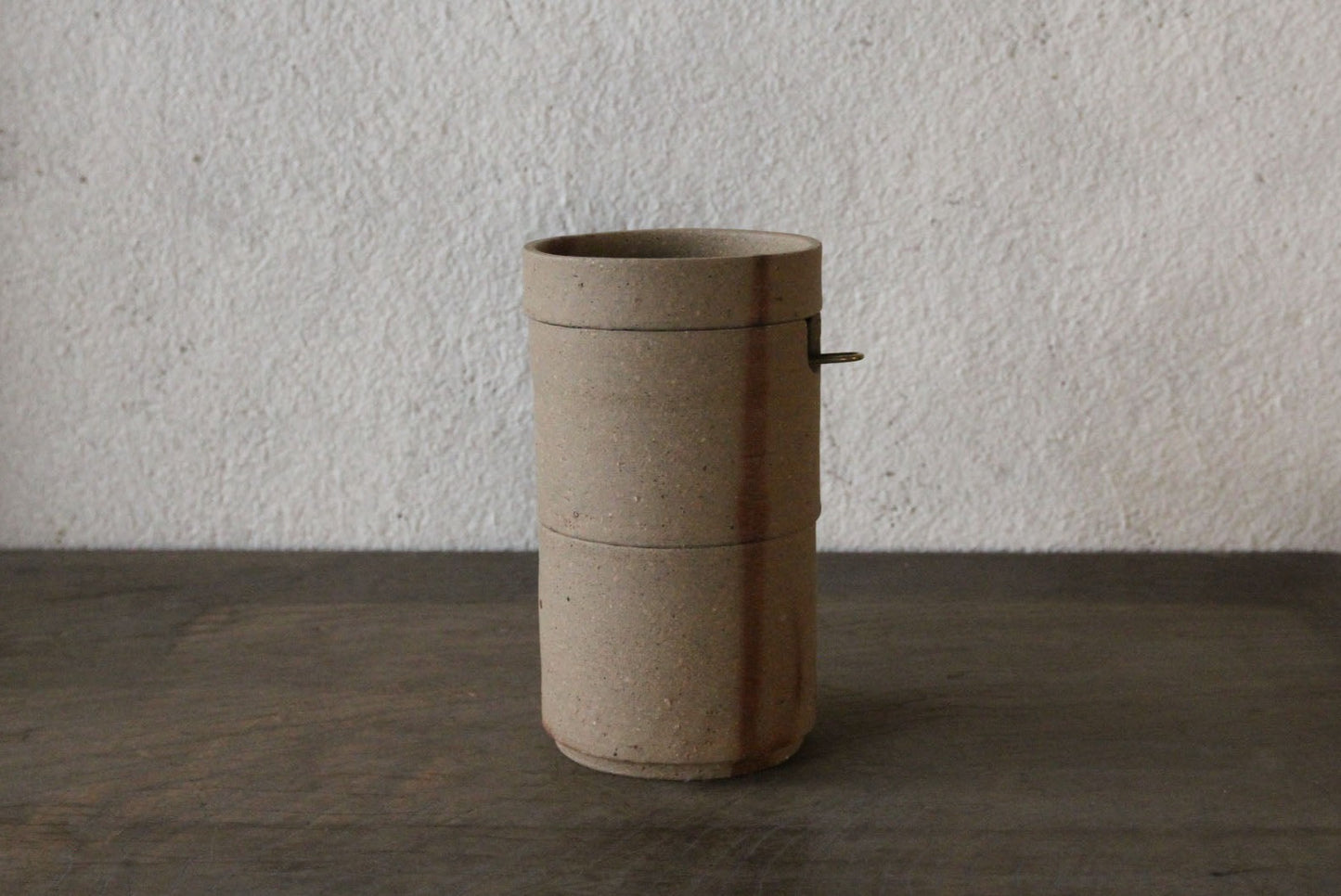
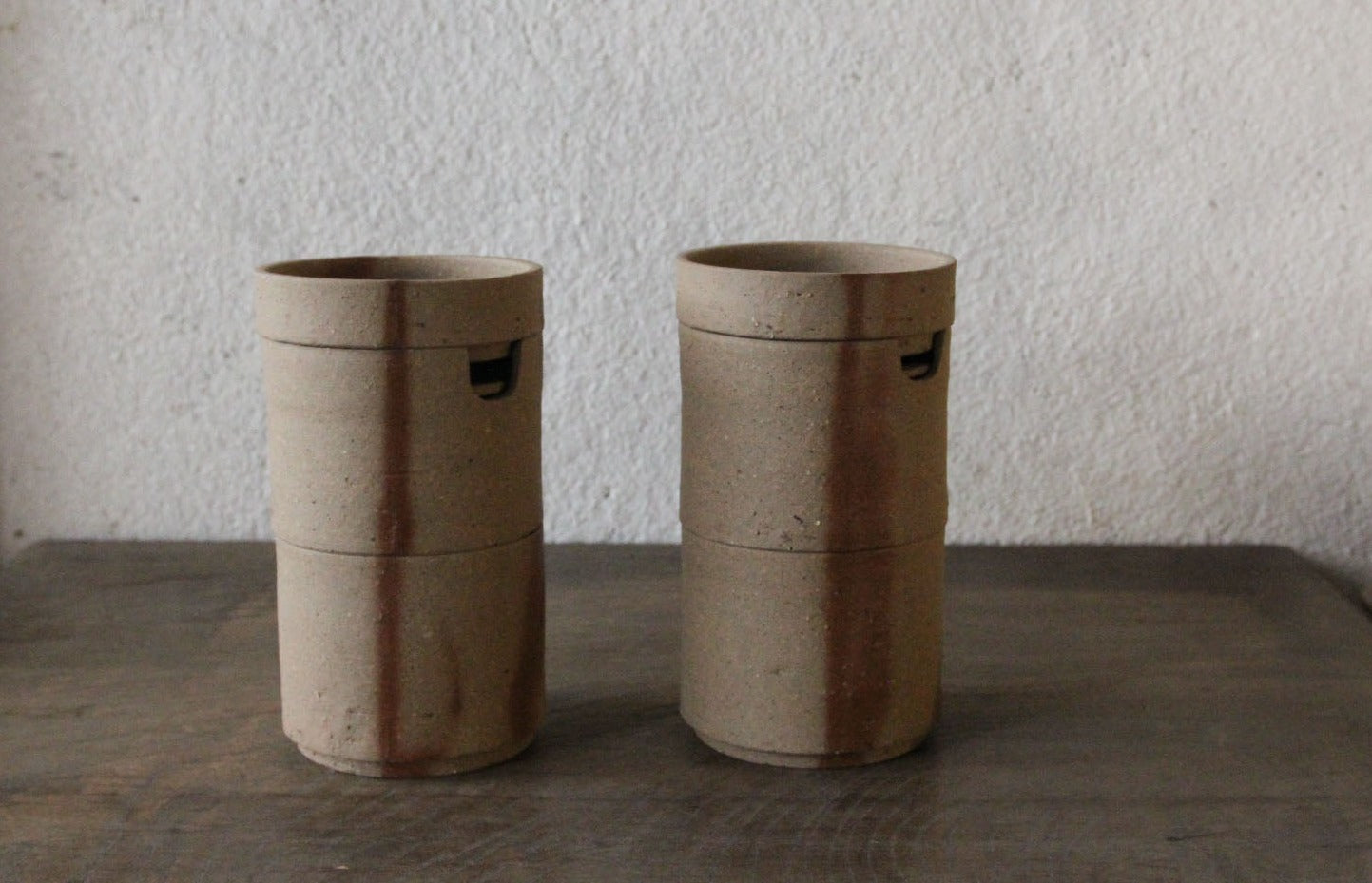
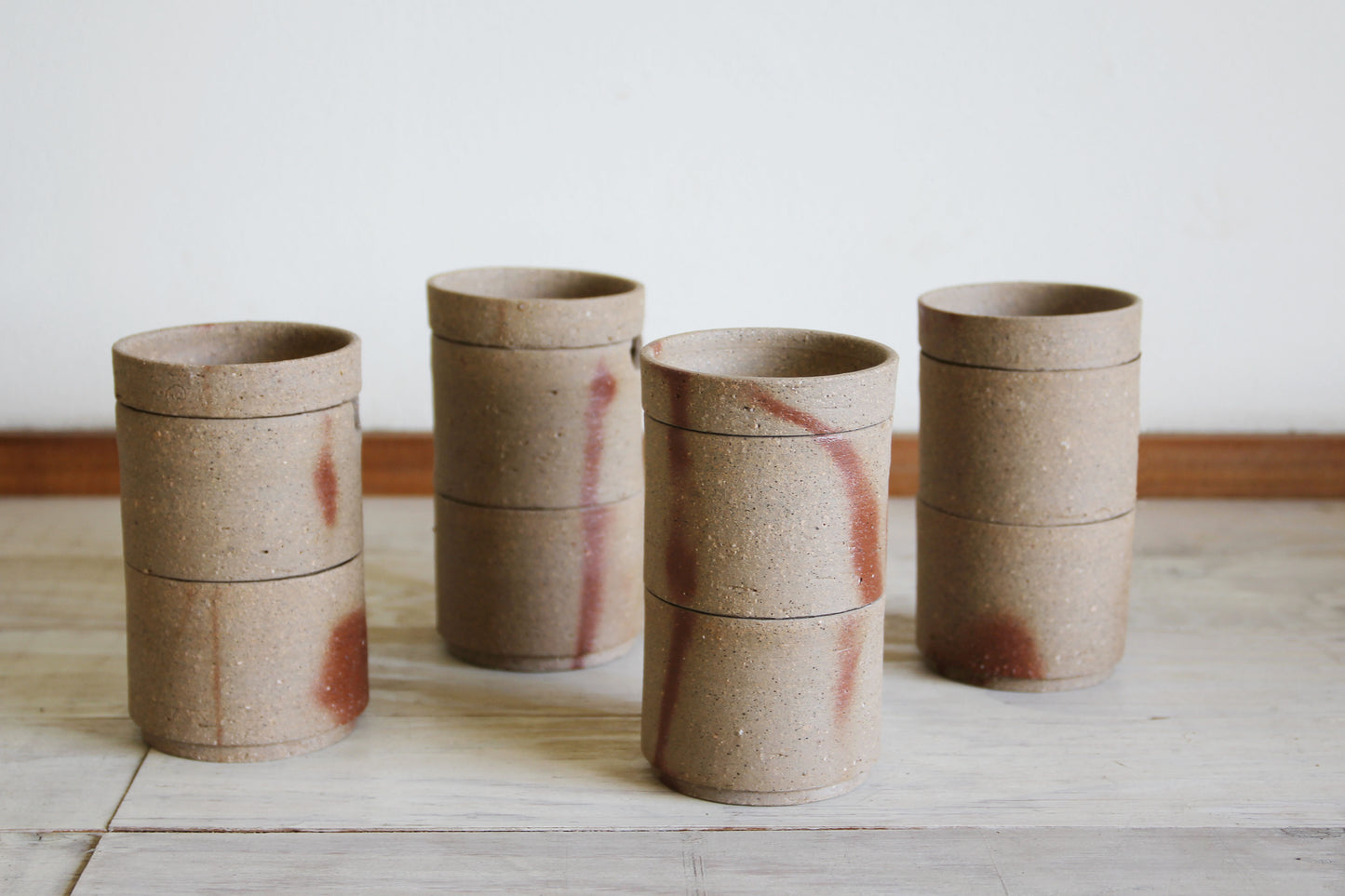
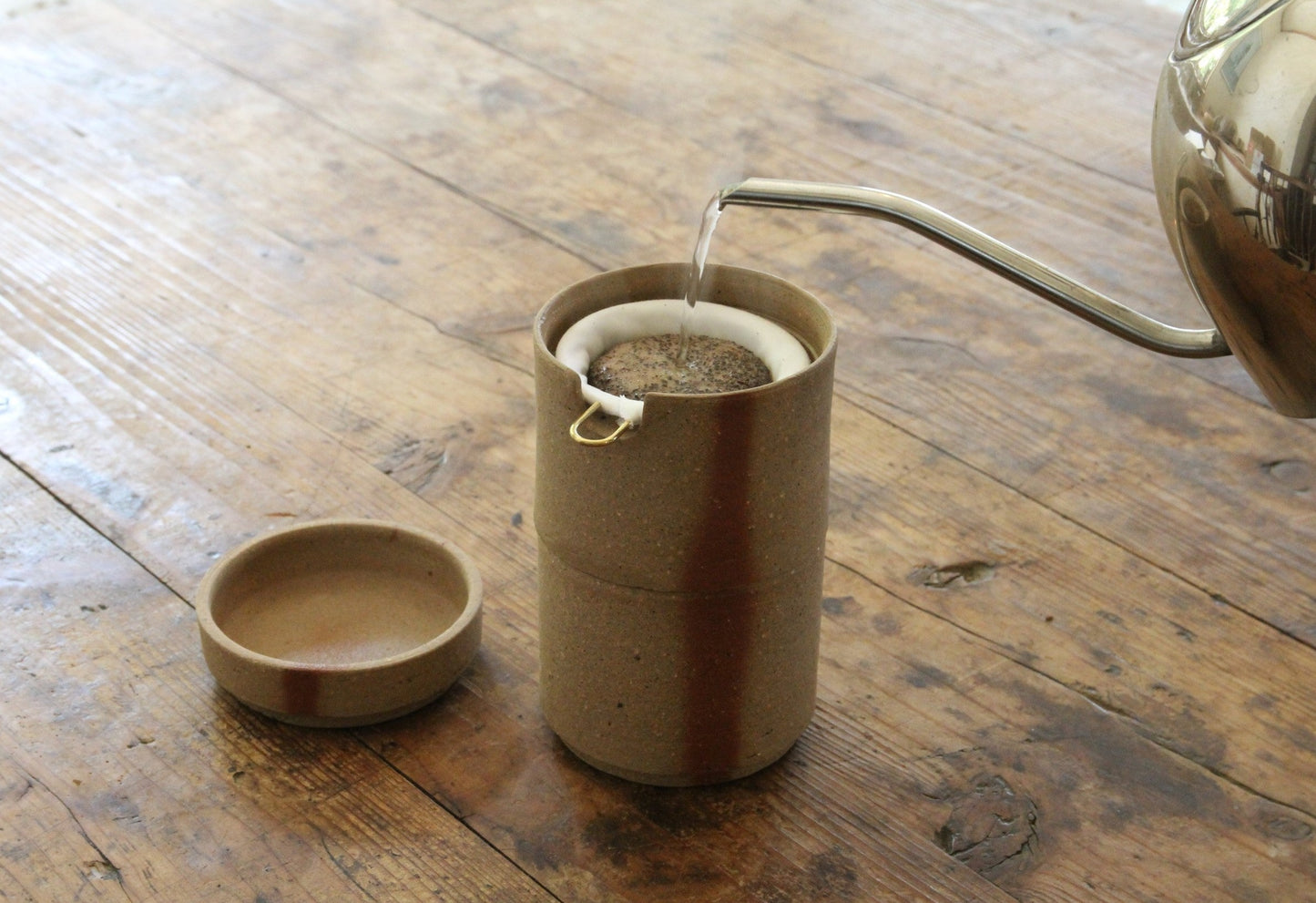
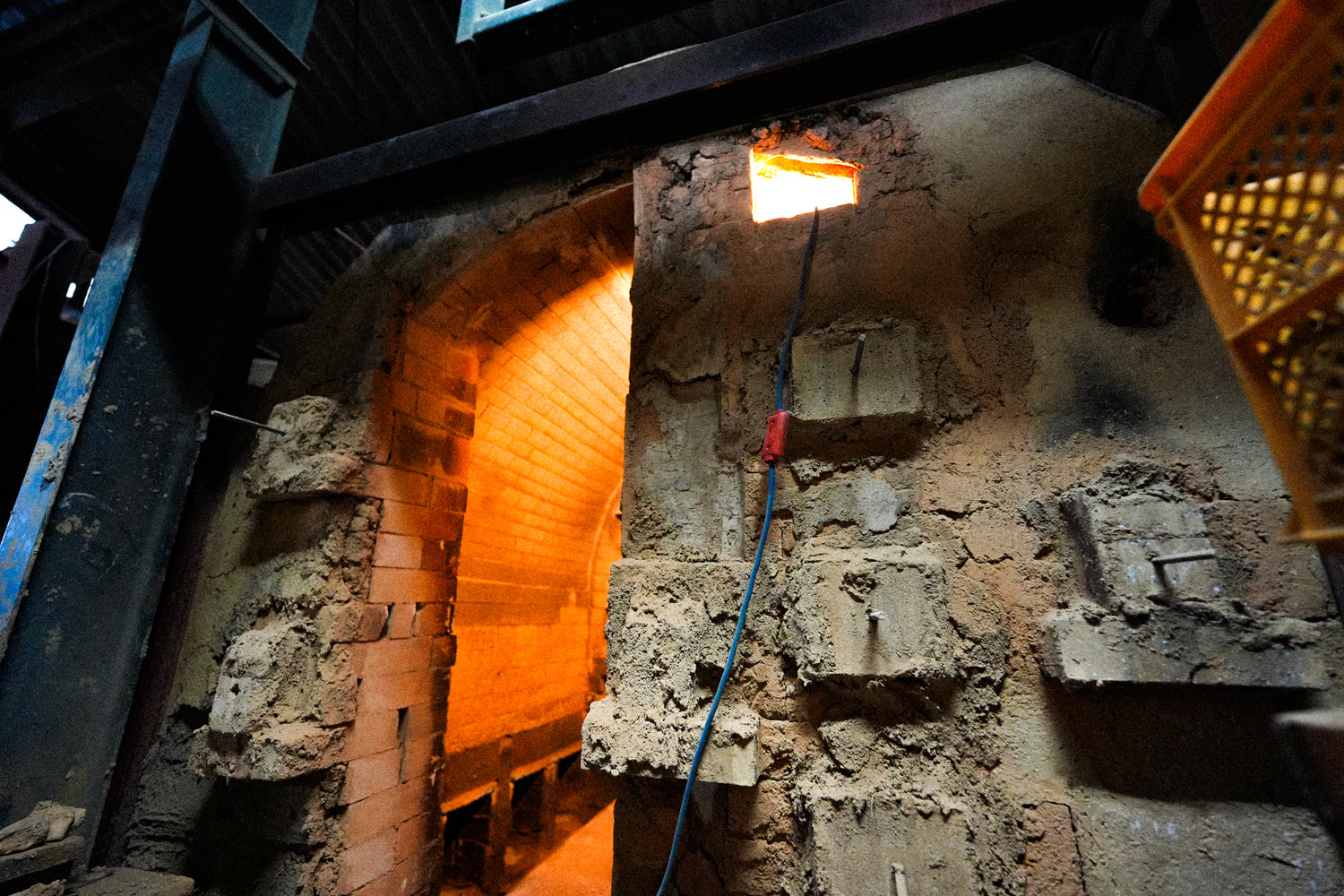
The History of Bizen Pottery
Bizen pottery is said to have originated from the gradual development of Sue pottery (sueki) production methods from the Kofun period, with the production of everyday items such as bowls, plates, and roof tiles beginning in the Heian period. By the Kamakura period, pottery with the characteristic reddish-brown fired surface that we see today began to be produced.
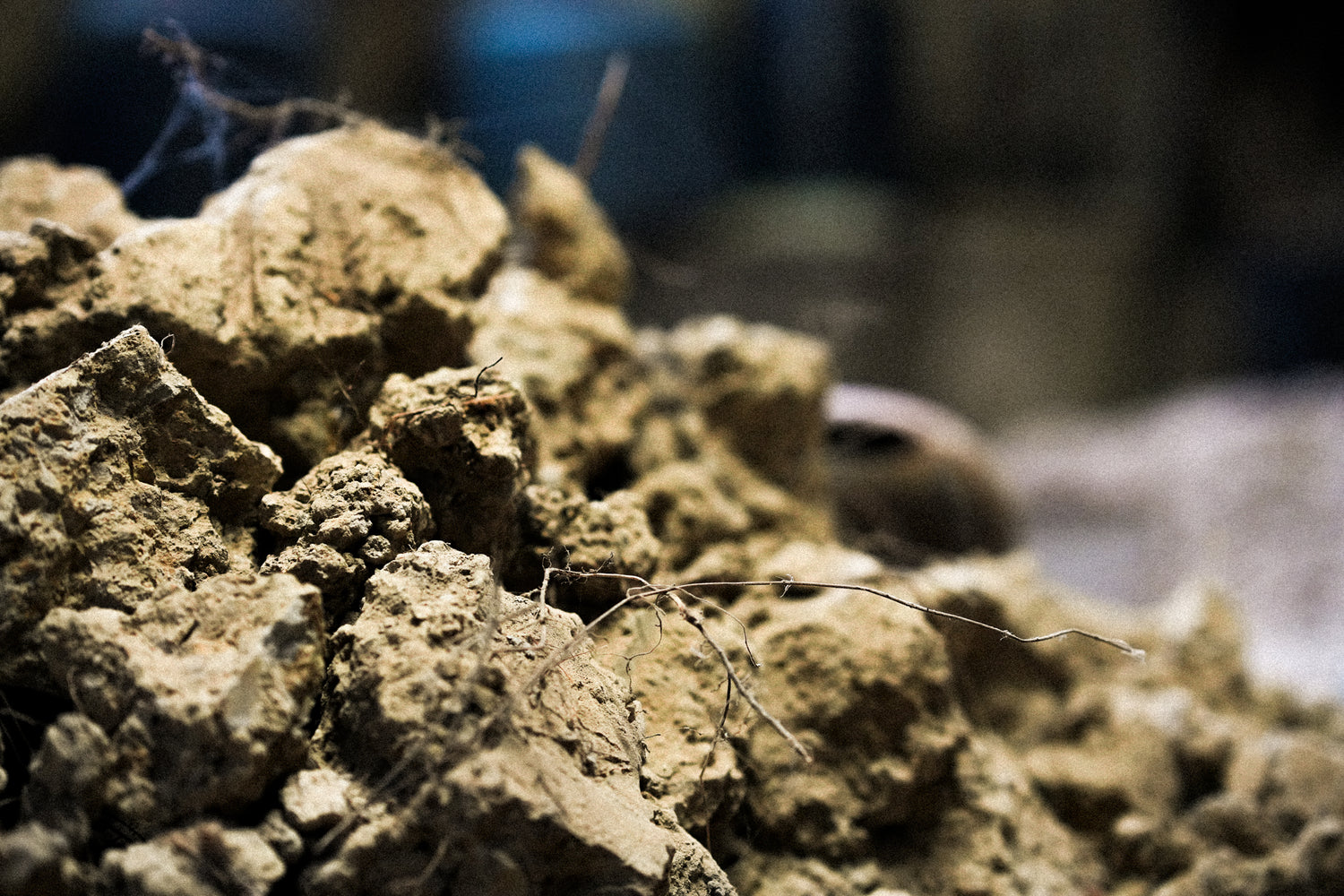
Characteristics of Bizen ware
We use clay called "hiyose," which is a mixture of soil excavated from rice fields combined with mountain soil and black soil containing iron. Without using glaze, the pieces are fired at high temperatures of 1200-1300 degrees to create a hard, tight finish that results in a distinctive reddish-brown surface. The patterns created through "kiln transformation" are each unique, with no two pieces being identical.
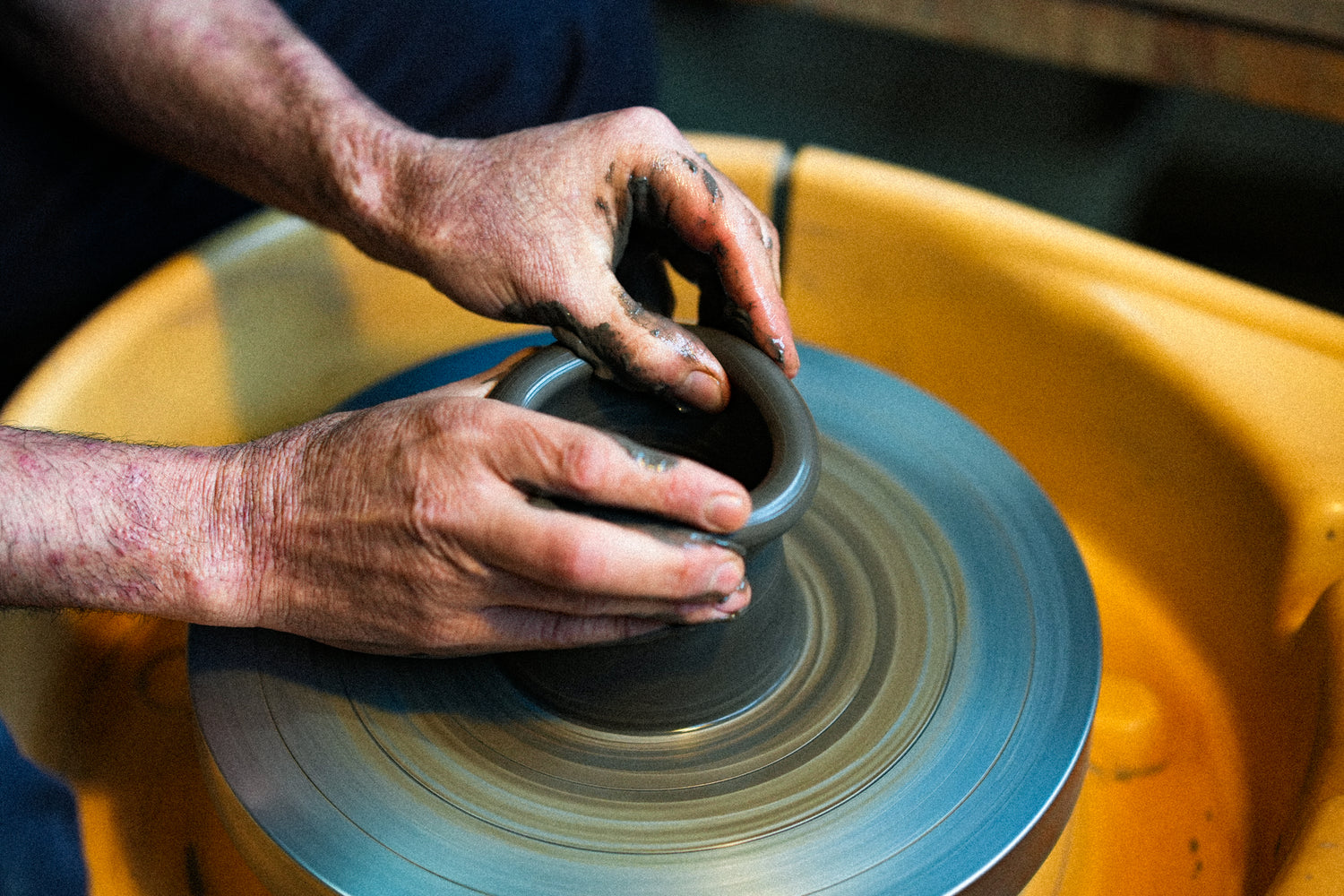
Bizen ware manufacturing process
In Bizen pottery, where the clay itself becomes the vessel, the selection and preparation of clay is crucial, and the clay's characteristics become the individuality of the kiln or artisan. After forming with a potter's wheel or hand-building, the pieces are naturally dried and fired in climbing kilns or electric kilns. The firing of Bizen pottery is typically done with split red pine wood.
Bizen ware
Bizen pottery is produced in the area around Bizen City, Okayama Prefecture. It is counted as one of Japan's representative Six Ancient Kilns along with Seto, Tokoname, Tanba, Shigaraki, and Echizen. Bizen pottery is formed from high-quality clay, dried, and then fired without painting or glazing, allowing the natural character of the clay to emerge prominently. The firing effects include goma, sangiri, and hidasuki patterns, which result from the arrangement in the kiln and the components of ash and straw that adhere during firing, ensuring that no two pieces have identical patterns.
Other products
-
Frustum clay pot (white glaze)
Regular price ₩150,000Regular priceUnit price per -
ST Mesh Dripper M (for 1 to 4 cups)
Regular price ₩44,800Regular priceUnit price per -
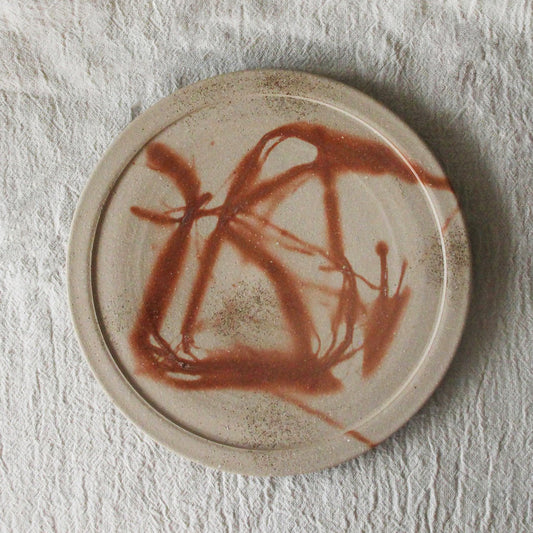 Sold out
Sold outDinner plate 27cm (Hidaski)
Regular price ₩122,000Regular priceUnit price per -
7 domestic palm brooms
Regular price ₩320,000Regular priceUnit price per









